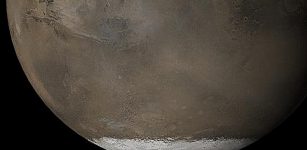What Is The Color Of The Sky On An Exoplanet?
MessageToEagle.com – The color of the sky on an exoplanet depends on many different factors such as the pressure, density and chemical composition of the exoplanet’s atmosphere.
The presence or absence of dust particles, clouds and vapor, the light coming from the local (parent) star – are also important.
The size of an exoplanet, its composition, color and even its biology (with lifeforms involved), can play an important role.
In other planetary systems, the constellation system in the sky differs much from that of Earth. The more distant the planet from the Sun is located, the less known constellations from Earth’s sky can be seen.
These differences are mainly due to which compounds or gases are scattering and absorbing the sunlight. Scattering is the major factor in most atmospheres and since molecules scatter short wavelengths best, and longer wavelengths the least well, this often results in blue skies. But large amounts of dust can lighten the sky or sometimes make it red.
High-pressure atmospheres would be much lighter than lower pressure ones and could appear completely white or yellow. Considering the large number of factors involved, it isn’t difficult to assume that exoplanet’s sky could be any color at all.
Therefore many colors are possible such as blue, cyan, green, yellow, red, purple, brown, orange or white.
A few years ago, a distant exoplanet GJ 3470b was discovered; it has blue skies but it is unlikely to host life as we know it or any life at all.
On extrasolar planets, the sky can have surprising colors. Perhaps one day we will be able to land on an exoplanet, where instead of blue sky that we’re accustomed to, we can admire a green, red sky or any other color.
See also:
Exoplanet WASP-12b Is Darker Than Asphalt
Great Attractor: Mysterious Gravitational Anomaly Beyond Hydra-Centaurus Supercluster
Is There Anything In The Universe Bigger Than A Galaxy?
Color of the sky on celestial objects in our Solar System
On Earth, the sky is predominantly blue and becomes orange or red near the setting or rising Sun. Sometimes it is also orange or somewhat red at the time of the sun setting. The sky seen from Mercury and Moon- is black. The sky on Mars – which has much thinner atmosphere (than that of Earth) and the presence of iron oxide-rich dust particles – is rather more of a brown color or red.
On planets where the atmospheric pressure is many times higher than on Earth – white. In the case of high content of methane (Uranus, Neptune), the color of the sky is greenish.
Copyright © MessageToEagle.com All rights reserved. This material may not be published, broadcast, rewritten or redistributed in whole or part without the express written permission of MessageToEagle.com
Related Posts
-
 New Details On What Happened In The First Microsecond Of Big Bang
No Comments | Jun 2, 2021
New Details On What Happened In The First Microsecond Of Big Bang
No Comments | Jun 2, 2021 -
 Multiple Cosmic Impacts Took Place On Earth 790,000 Years Ago
No Comments | Feb 26, 2016
Multiple Cosmic Impacts Took Place On Earth 790,000 Years Ago
No Comments | Feb 26, 2016 -
 2400 New Eyes On The Sky To See Cosmic Rainbows
No Comments | Nov 14, 2022
2400 New Eyes On The Sky To See Cosmic Rainbows
No Comments | Nov 14, 2022 -
 What The Magi Had In Common With Scientists
No Comments | Dec 23, 2016
What The Magi Had In Common With Scientists
No Comments | Dec 23, 2016 -
 Giant Collision In The Planetary System Kepler 107
No Comments | Feb 8, 2019
Giant Collision In The Planetary System Kepler 107
No Comments | Feb 8, 2019 -
 Our Sun Does Not Originate From M 67
No Comments | May 5, 2012
Our Sun Does Not Originate From M 67
No Comments | May 5, 2012 -
 Possible Recent Underground Volcanism On Mars – New Study
No Comments | Feb 14, 2019
Possible Recent Underground Volcanism On Mars – New Study
No Comments | Feb 14, 2019 -
 Secrets Of Extraterrestrial Entity ‘Cthulhu’ Revealed By Scientists
No Comments | Oct 6, 2015
Secrets Of Extraterrestrial Entity ‘Cthulhu’ Revealed By Scientists
No Comments | Oct 6, 2015 -
 On This Day In History: Tycho Brahe’s Supernova Observed In Constellation Cassiopeia – On Nov 6, 1572
No Comments | Nov 6, 2016
On This Day In History: Tycho Brahe’s Supernova Observed In Constellation Cassiopeia – On Nov 6, 1572
No Comments | Nov 6, 2016 -
 ‘Planet Confusion’ Could Slow Earth-Like Exoplanet Exploration
No Comments | Sep 30, 2021
‘Planet Confusion’ Could Slow Earth-Like Exoplanet Exploration
No Comments | Sep 30, 2021


